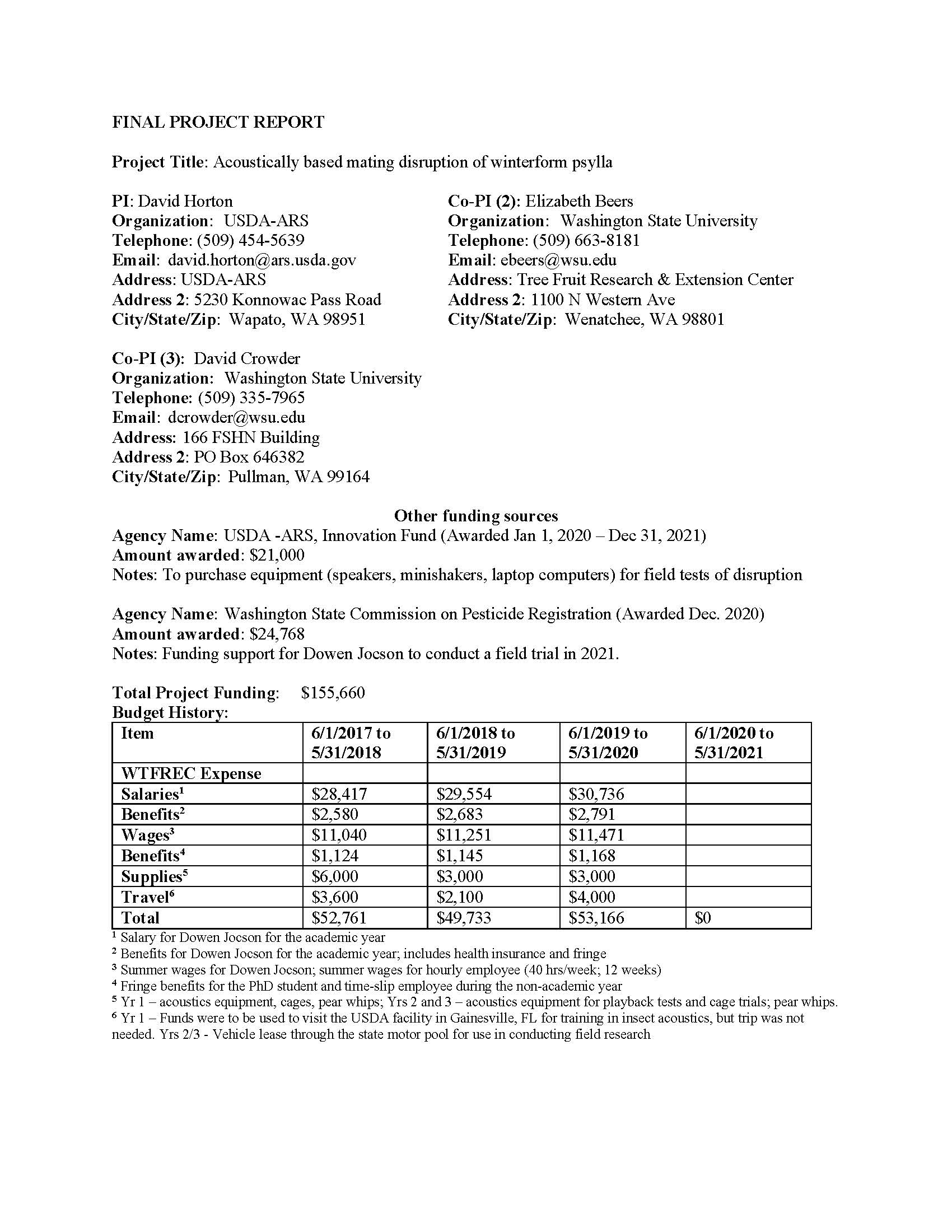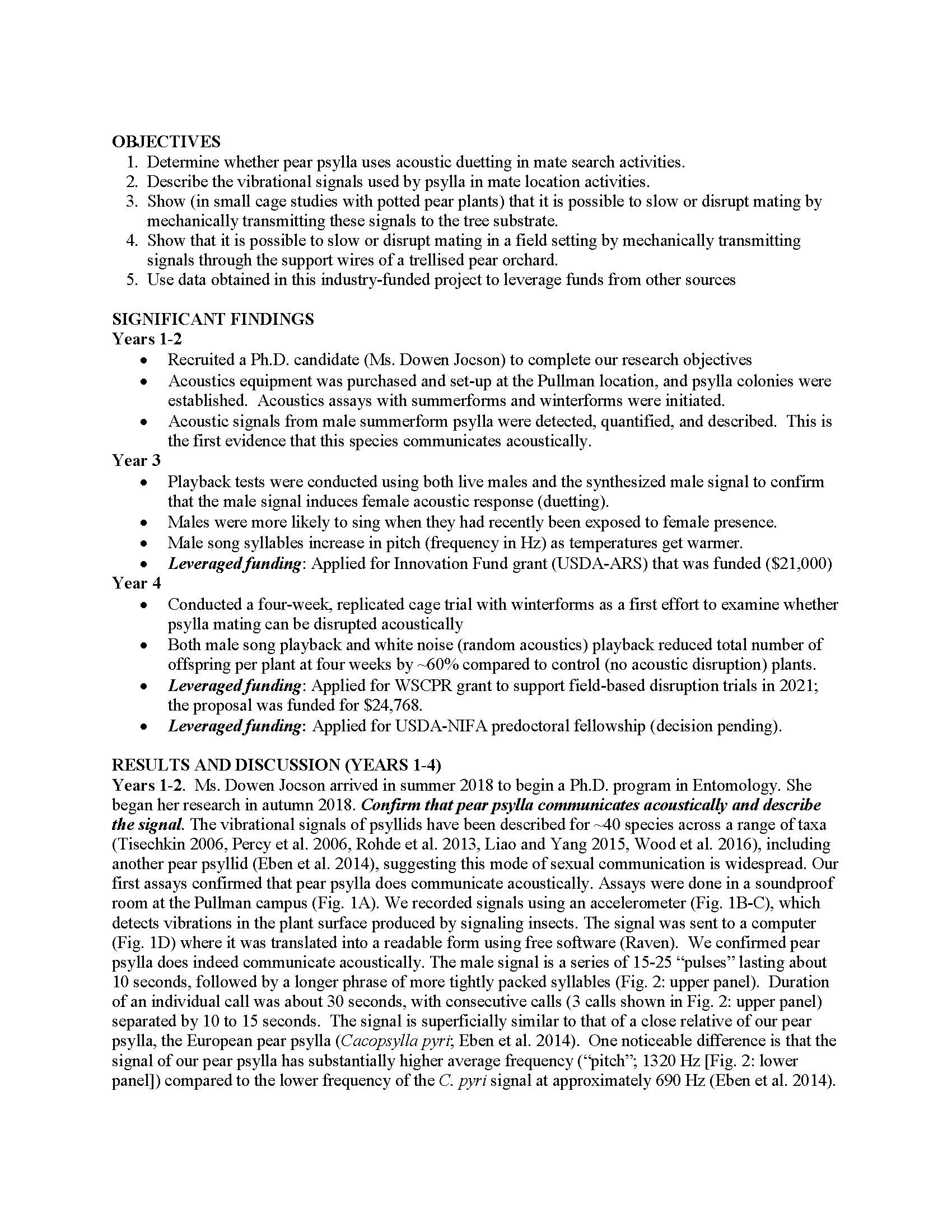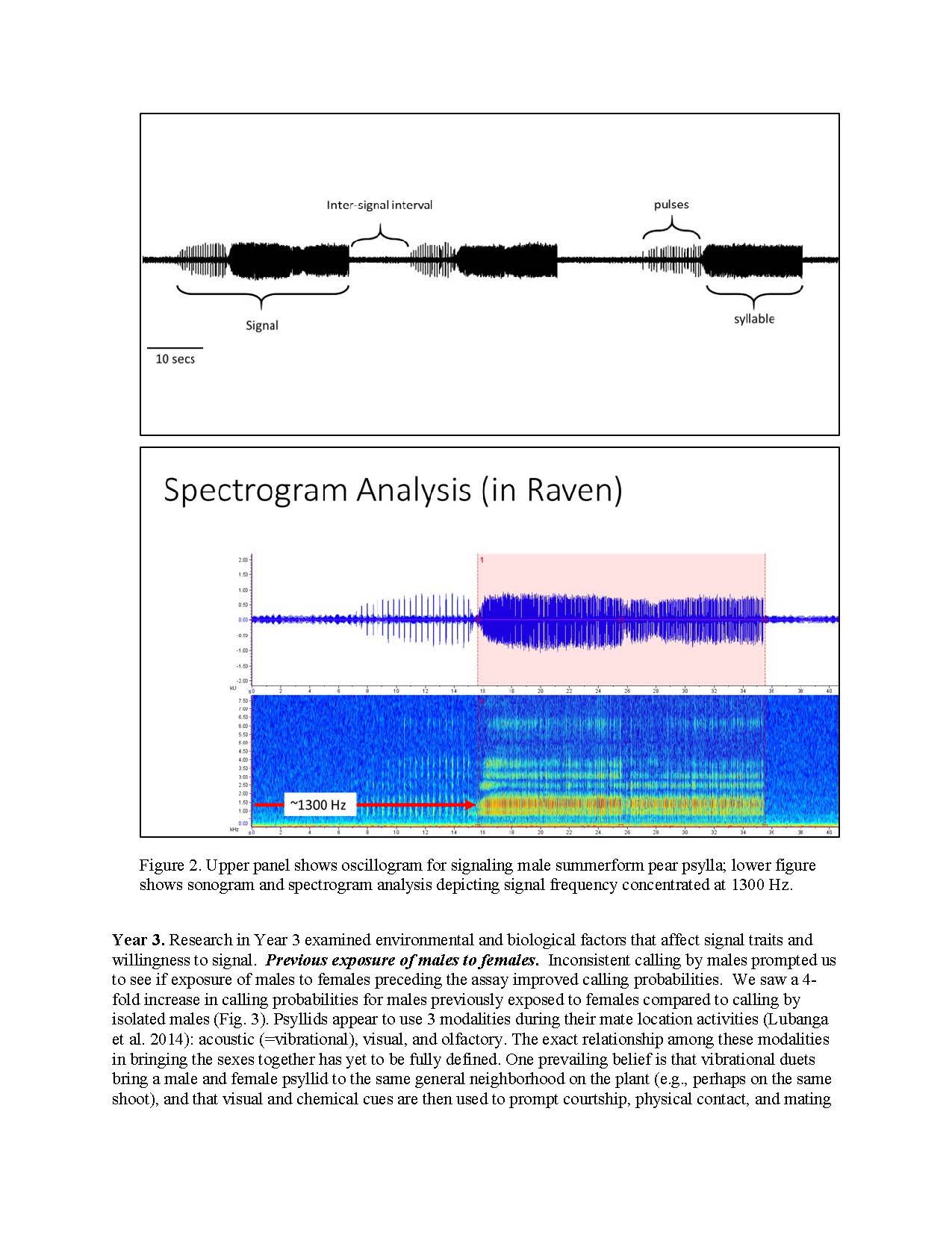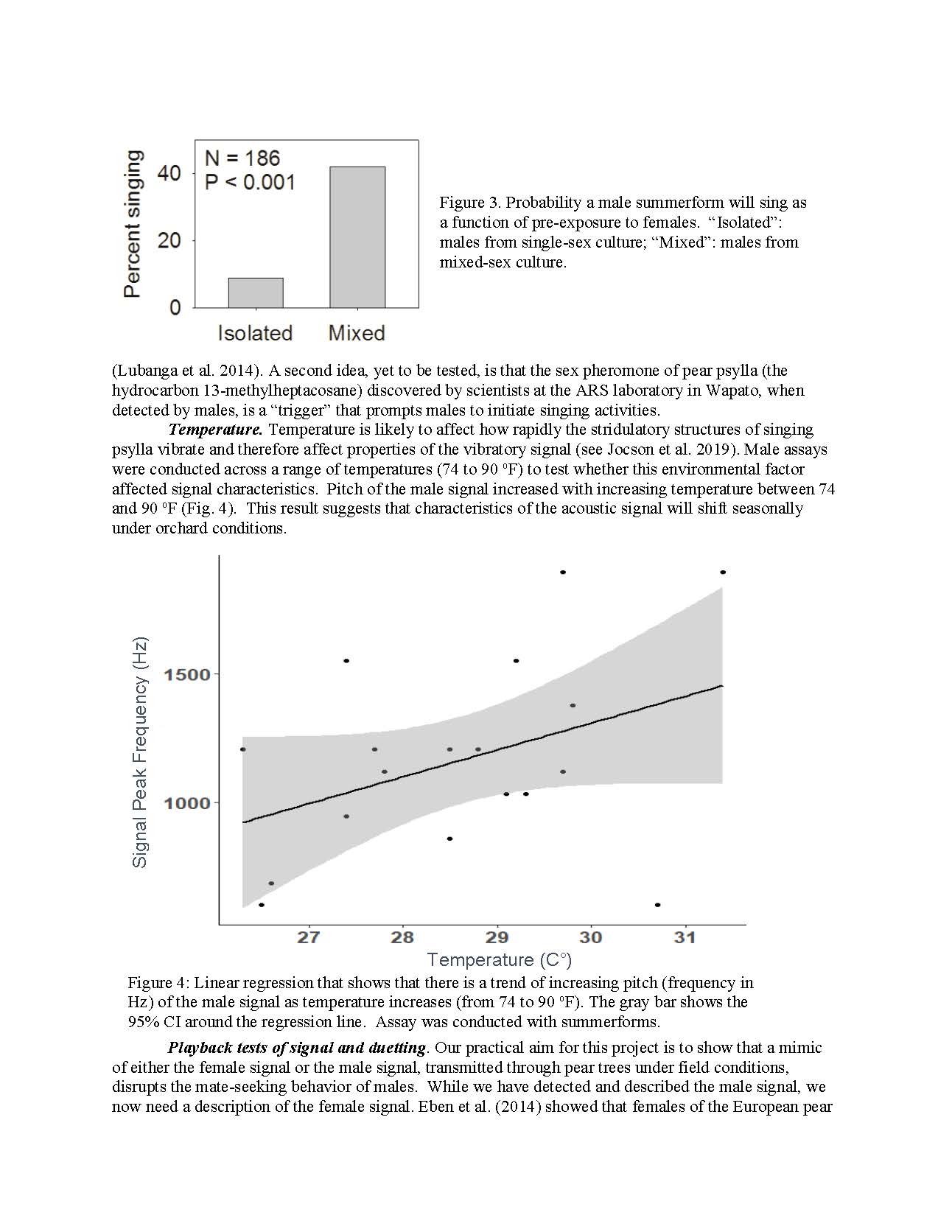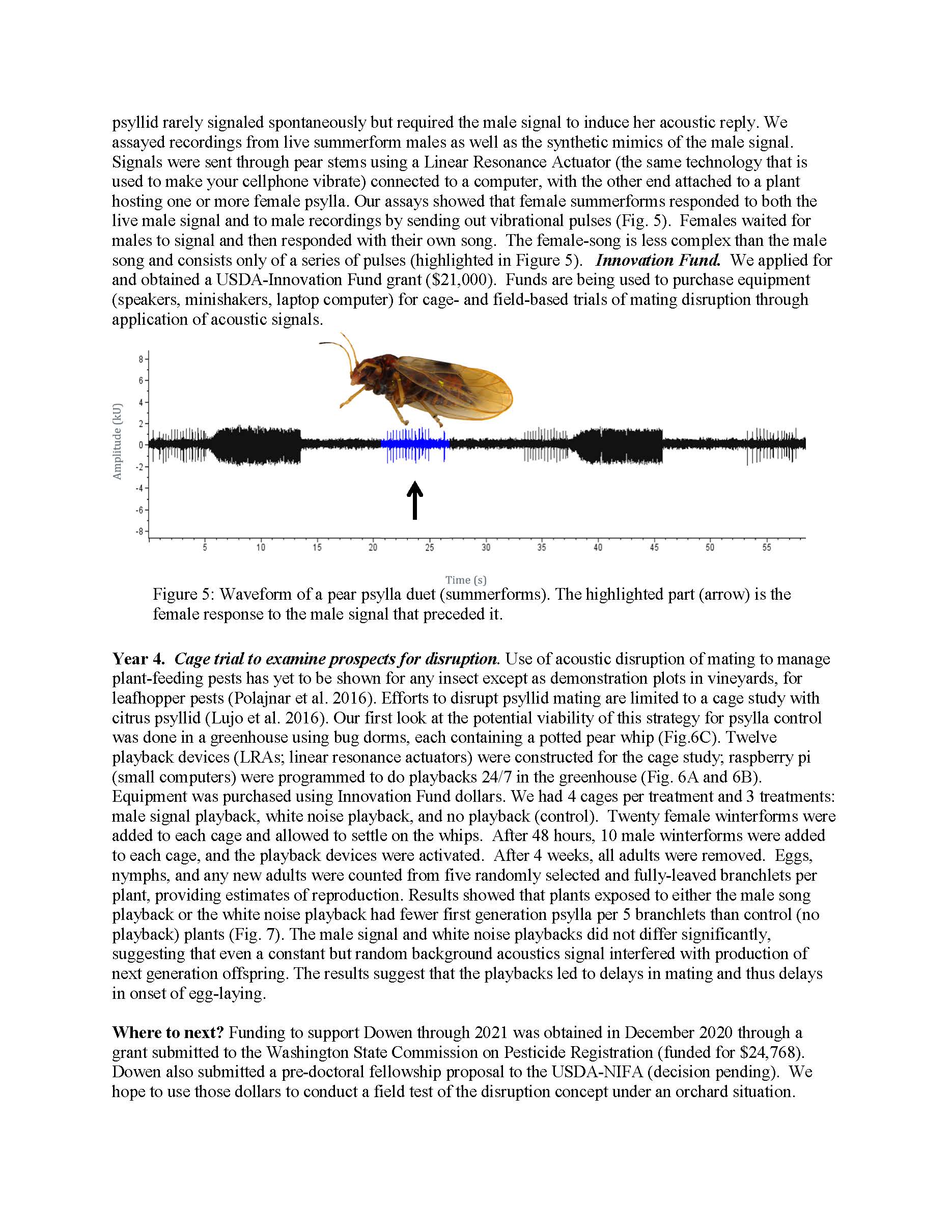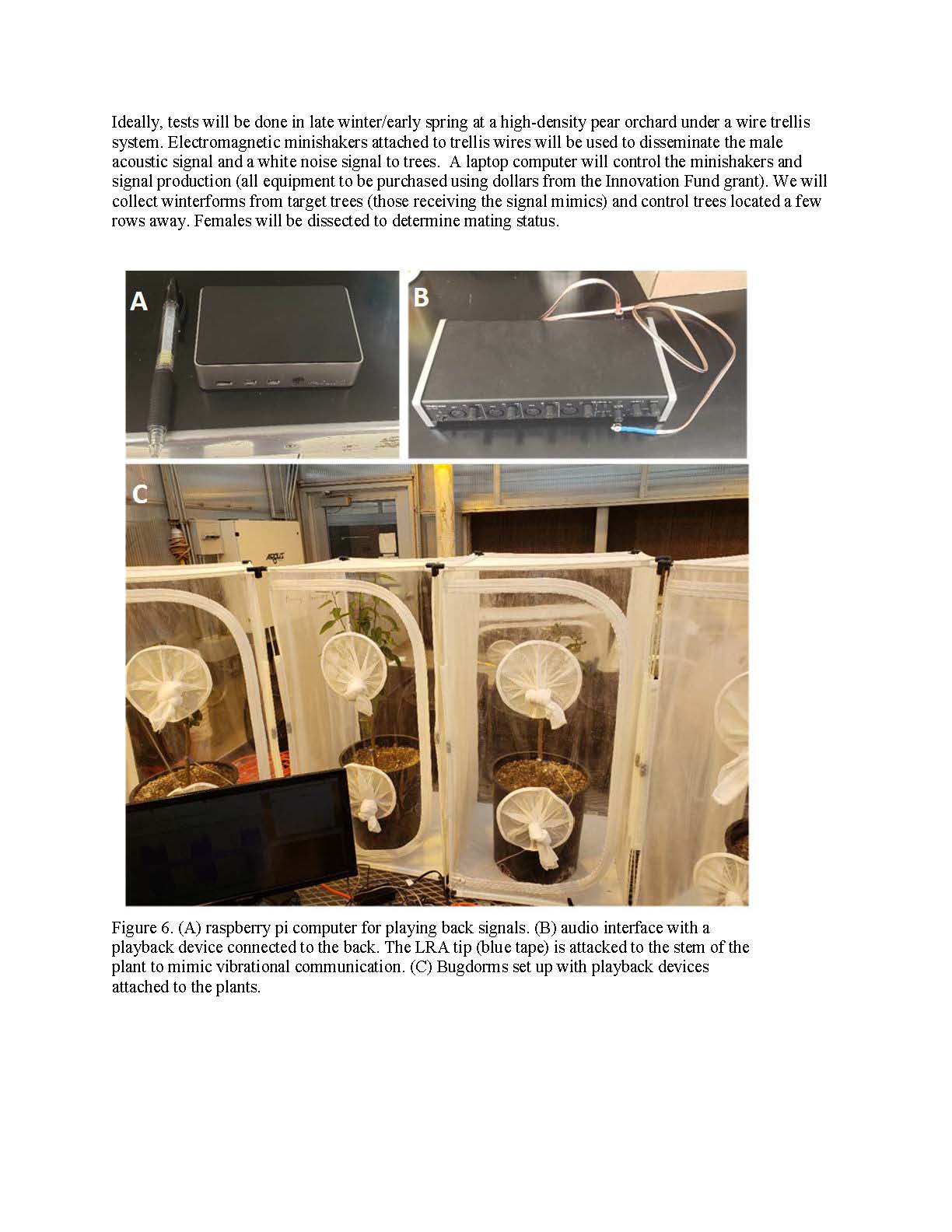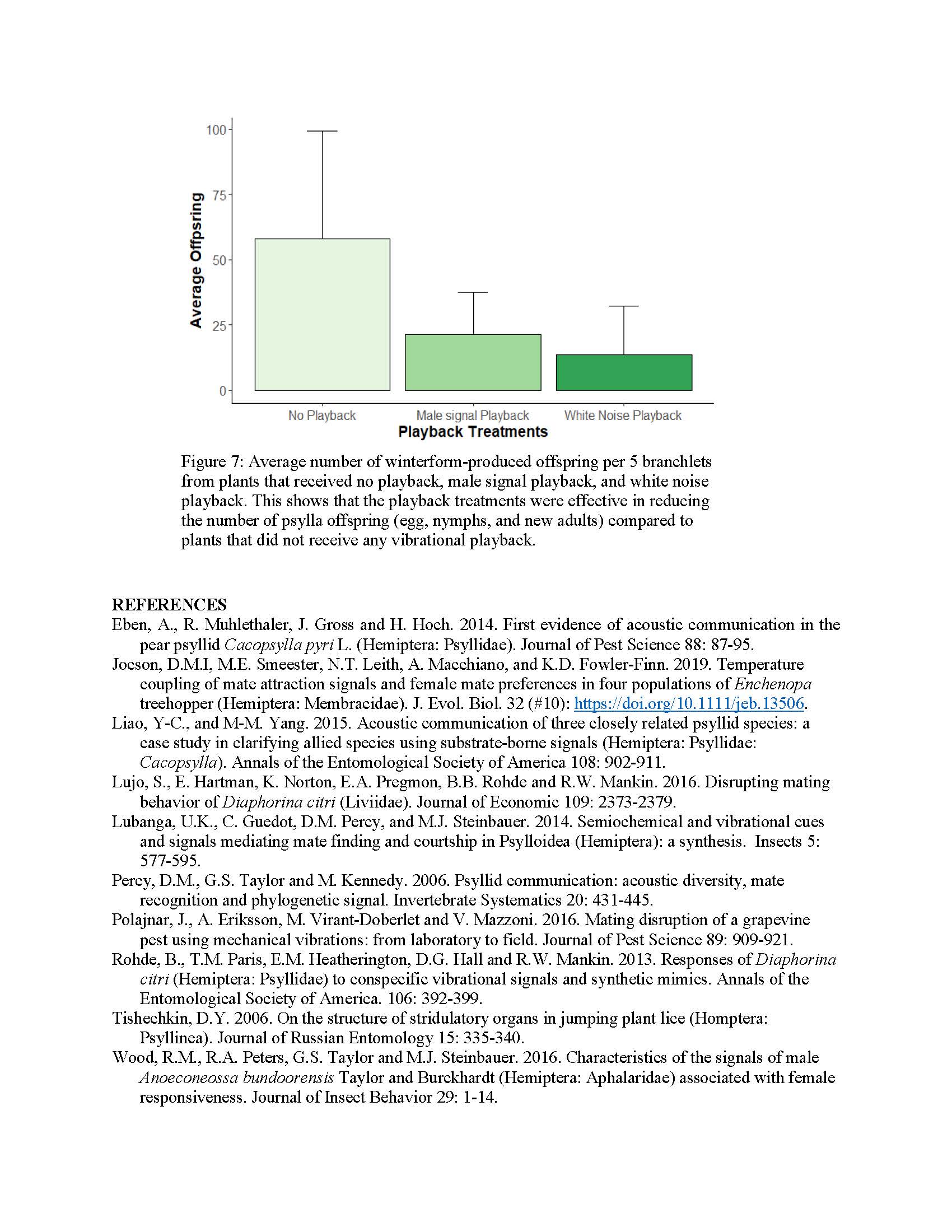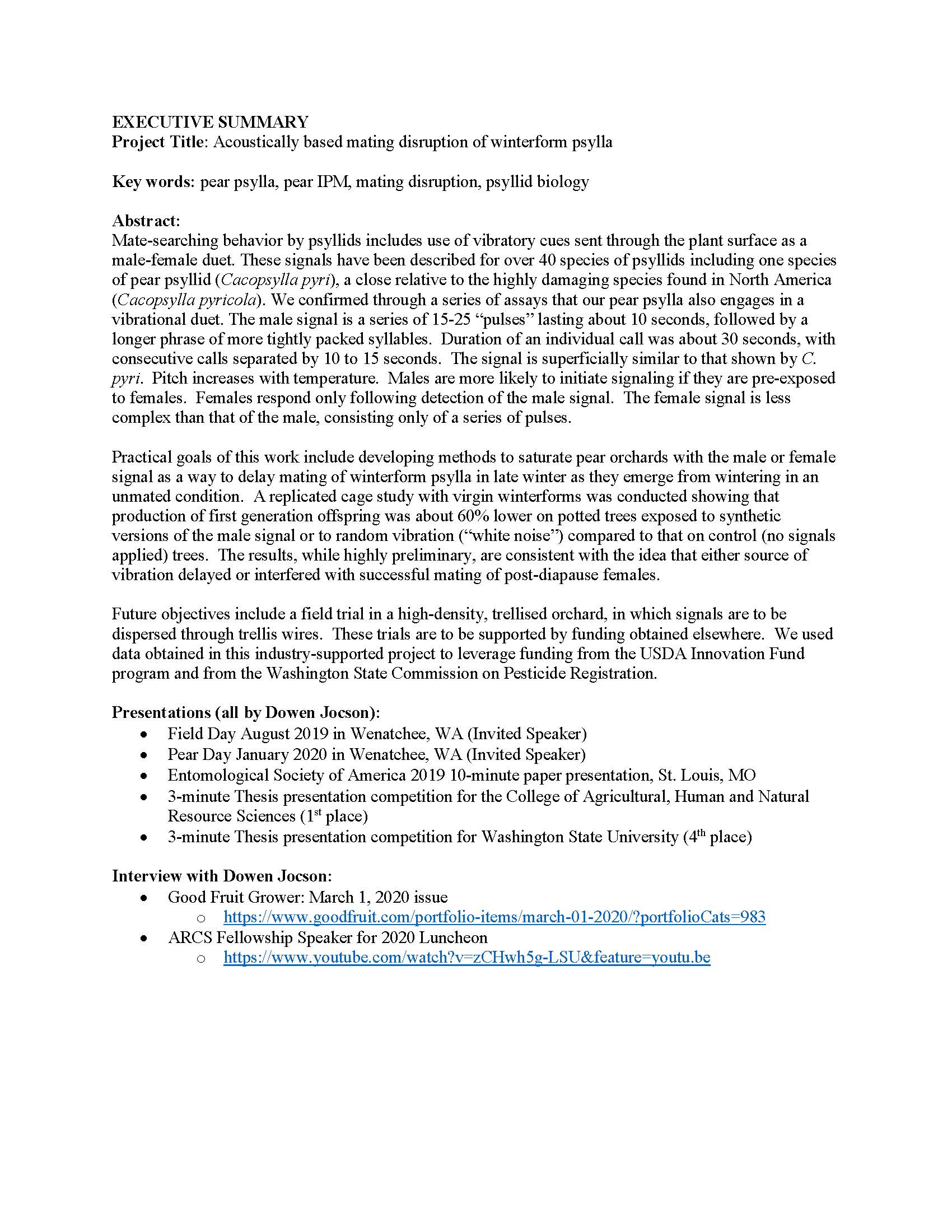Acoustically based mating disruption of winterform psylla
Author: David Horton, Elizabeth Beers, David Crowder
Published: 2021
Summary: Mate-searching behavior by psyllids includes use of vibratory cues sent through the plant surface as a male-female duet. These signals have been described for over 40 species of psyllids including one species of pear psyllid (Cacopsylla pyri), a close relative to the highly damaging species found in North America (Cacopsylla pyricola). We confirmed through a series of assays that our pear psylla also engages in a vibrational duet. The male signal is a series of 15-25 “pulses” lasting about 10 seconds, followed by a longer phrase of more tightly packed syllables. Duration of an individual call was about 30 seconds, with consecutive calls separated by 10 to 15 seconds. The signal is superficially similar to that shown by C. pyri. Pitch increases with temperature. Males are more likely to initiate signaling if they are pre-exposed to females. Females respond only following detection of the male signal. The female signal is less complex than that of the male, consisting only of a series of pulses. Practical goals of this work include developing methods to saturate pear orchards with the male or female signal as a way to delay mating of winterform psylla in late winter as they emerge from wintering in an unmated condition. A replicated cage study with virgin winterforms was conducted showing that production of first generation offspring was about 60% lower on potted trees exposed to synthetic versions of the male signal or to random vibration (“white noise”) compared to that on control (no signals applied) trees. The results, while highly preliminary, are consistent with the idea that either source of vibration delayed or interfered with successful mating of post-diapause females. Future objectives include a field trial in a high-density, trellised orchard, in which signals are to be dispersed through trellis wires. These trials are to be supported by funding obtained elsewhere. We used data obtained in this industry-supported project to leverage funding from the USDA Innovation Fund program and from the Washington State Commission on Pesticide Registration.
Keywords:

